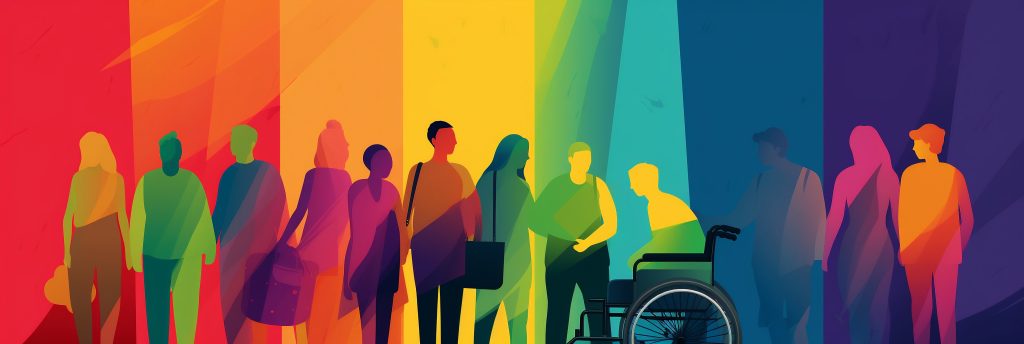Lost in translation? Enhancing Medical Education for Language Diversity: A UKCCC Conference 2025 blog

A Summary and Reflections on the Roundtable Discussion from the UKCCC Conference 2025
We were delighted to co-facilitate the session about enhancing language diversity in medical education – an area of mutual interest as communication skill educators. We live in a culturally and language diverse world and have daily encounters with patients with limited English proficiency and we know that these barriers are a major determinant of health inequalities. We are aware teaching of these issues is fragmented and often opportunistic and wanted a forum to explore this further and seek opportunities to share good practice and work collaboratively to improve communication skills training.
Context: why it matters
Our session began by framing both the importance and complexity of language diversity in healthcare and the healthcare training. We highlighted that about 9% of the UK population speaks a language other than English, and 2% speak limited or no English (Office for National Statistics (ONS), 2022). Crucially, the impact of language on health outcomes in the UK is significant with poorer self-reported health outcomes in those who speak little or no English (Office for National Statistics (ONS), 2015) and poorer health outcomes. We highlighted there is a need to address this in training our medical students as outlined by the General Medical Council (General Medical Council (GMC), 2020). It is vital inclusivity, and diversity is embedded in the communication training of tomorrow’s doctors.
Session structure
In designing the session, we developed questions we hoped would be reflective and thought-provoking to guide attendees to evaluate practices at their own institutions, identify barriers and facilitators to teaching language diversity, and co-create future aspirations for the area. On the day we were pleased with the full room and engagement of the roundtable attendees.
Motivations for attending
We started by asking attendees to identify their motivations for attending. These included:
- Designing more effective interpreter-inclusive teaching.
- Building a deeper understanding of working with interpreters, including dialectical differences, omissions (ethical boundary considerations), and cultural nuances.
- Adapting existing online resources to reflect language diversity.
- Encouraging clinical tutors to reinforce skills to prevent skill degradation in the clinical years.
- Creating space for experiential learning (e.g., simulations, working with interpreters in a clinical context).
- Teaching students about the cultural and religious contexts in which language is used.
What’s already happening – Good practice
Attendees shared several examples of innovative and effective teaching strategies from their institutions:
- Role reversal exercises where students attempted administrative tasks (e.g., completing patient registration forms) in unfamiliar languages to build empathy.
- Simulation scenarios involving patient actors who only used British Sign Language (BSL) or limited English.
- Real or simulated telephone interpreting exercises.
- Teaching students about the risks of working with lay interpreters (e.g., friends or family). Risks include family members omitting sensitive topics.
- Teaching best practices in interpreter positioning (e.g., interpreter sitting beside the clinician to preserve patient-clinician eye contact).
- Encouraging reflective writing to explore student’s reactions and learning in challenging communication scenarios.
- Partnerships with refugee organisations and court interpreters to provide real world insights.
- Use of digital tools such as Cardmedic, which supports multilingual communication in healthcare.
What are the barriers and what could be done better?
We separated our discussion of challenges into early and clinical years, based on the rationale that students’ learning environments and levels of patient interaction differ significantly across a typical medical degree.
Early years (pre-clinical)
Discussions highlighted that in the pre-clinical stages limited patient exposure makes it more difficult to introduce complex triadic communication involving interpreters. Attendees felt that students are often mastering basic core communication skills (e.g., building rapport, structuring conversations, and using appropriate questioning techniques) in the early years. Thus, cognitive load for students was an important consideration. However, these “easier” conversations (often with simulated patients) may provide a safe space to introduce language complexity and begin to normalise diverse communication styles.
This discussion left us with an unanswered pedagogical question: should language diversity be introduced earlier to build confidence, or should we wait until foundational communication skills are solidified?
Clinical Years
During the clinical years, students face inconsistent exposure to language diversity depending on location, supervisors, and patient demographics. The unstructured learning environment means some students may have high quality regular exposure, while some students may never witness best practice use of interpreters or may only witness poor practice.
Systemic and institutional challenges were also discussed. Attendees shared their experiences:
- Large cohort sizes and how budget, time, space and staffing can limit access to high-quality (typically small group) simulations.
- Institutional budgets to bring in external educators or organisations to teach these topics are not consistent.
- Timetabling and facilitator shortages make it hard to embed interpreter-led sessions.
- Lack of assessment and standardisation can lead to de-prioritisation in a busy curriculum.
- The “hidden curriculum” may convey that this content is optional or unimportant- especially if it is delivered by a single champion and is not sustained if they leave the institution.
- Partnership with external organisations (such as refugee organisations) may not be feasible for all institutions as there may not be a local organisation available to contact.
Envisioning best practice – what would a collective good look like?
We closed the session by inviting attendees to imagine what “good” would look like with unlimited resources and time.
In the early years:
- Sessions should explore cultural differences in communication. Reflection can be used as an assessment tool. Rich experiences can be drawn from students’ own experiences if appropriate.
- Silence as communication should be explored (it is not just about what you say, giving space can be powerful).
- It would help if communication were framed as a connection not a performance or a check list.
- Accent variation should be explored.
- Interpreter use should be embedded in experiential sessions, with space for reflective exercises to build these vital skills. This should include not just how, but when, and why.
In the clinical years:
- Interpreter use should be integrated into clinical placements where feasible, although we acknowledged the difficulty of standardising this in a live clinical environment.
- Students should be introduced to referral letters with reasonable adjustment tools and diverse real-world examples drawn from patients who use BSL, have learning disabilities, or face health literacy challenges.
Looking to the future
We discussed the emerging role of AI in translating GP letters and patient communications. While promising, we felt it was important that these tools are used critically by students. Exercises where students reflect on the accuracy of AI translations compared to human interpreters (and consider the ethical implications) should be considered. Embedding reflection into the use of AI tools could develop students’ digital literacy and critical evaluation skills.
Finally, we envisioned a patient-led curriculum, where those with lived experience (e.g., asylum seekers, refugees) can meaningfully share their perspectives and help shape communication training. Avoiding tokenism requires sustained engagement and continuous presence in the curriculum. It is also important to give back to communities, individuals, and organisations who contribute their valuable expertise. Assessments should reflect cultural and linguistic inclusiveness, ensuring these competencies are valued.
Conclusion
Facilitating this session has made us even more aware of the importance and value of high-quality communication skills training for medical students. It also helped us understand the variable experience different students will encounter regarding language diversity across institutions and clinical settings. For our students, it is vital that communication is framed as a way for them to connect with patients across differences. For our patients, we need to strive to ensure inclusivity, so they benefit from shared decision making and improved health outcomes that we all deserve.
We thank Nina Tabibzadeh (City St George’s, University of London, medical student) for kindly transcribing our discussion and capturing key thoughts and moments. We acknowledge her words as forming the basis of this reflection.
Share this blog post:
Featured blog posts:
Lost in translation? Enhancing Medical Education for Language Diversity: A UKCCC Conference 2025 blog
Ensuring Equity and Inclusion in AI Driven Medical Education Innovations – A medical student perspective from the UKCCC Conference 2025
Rooted In Partnership: Cultivating the Clinical Communication Curriculum Through Student Collaboration – A medical student perspective from the UKCCC Conference 2025

Contact Us



